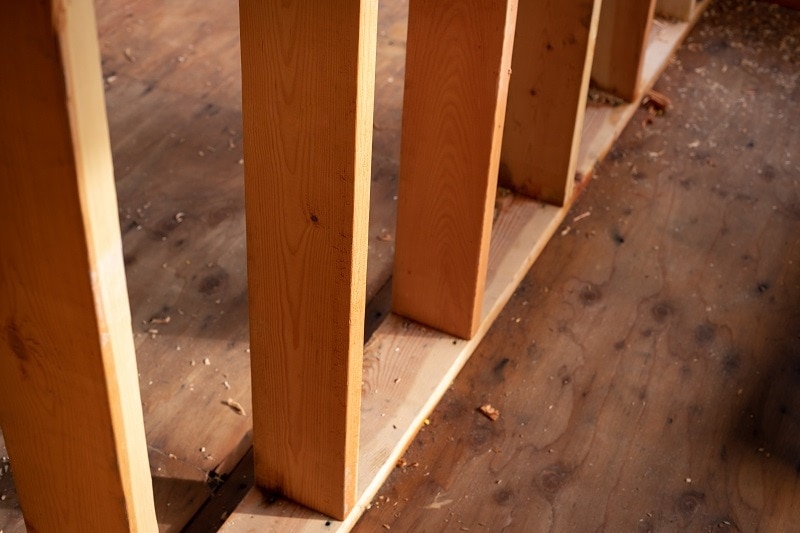How to Find a Stud in the Wall without a Stud Finder – Easy Guide
-
- Last updated:


Keep reading while we show you how to find wall studs without using a stud finder.

What is a wall stud?
Wall studs are often wood boards similar to 2 x 4s behind your wall. They hold up the drywall that makes up your wall and ceiling. When placed horizontally to hold up the ceiling, we call them joists. These wall studs are always either 16 or 24 inches apart. It will be one or the other, and the whole house will be the same.
How do I find a wall stud?
If you are looking to hang a picture and don’t have the time or budget to pick up a stud finder, it’s not hard to locate them yourself by following just a few steps.
- Start at one corner and measure out 16 inches.
- Knock on the wall at the 16-inch mark. If it sounds hollow, you will need to continue to the next step. If it sounds solid, you found your first stud, and there will be another every 16-inches to the other corner.
- If the wall sounded hollow at 16 inches, pull the tape measure out to 24 inches and try again. This time you should not hear the hollow sound, and the solid thump will let you know you have found the stud. There will be another stud every 24-inches to the other corner.
Outlets
The outlets in your home are always attached to a wall stud, so if you have an outlet on your wall, you know where at least one wall stud is. You can then use your tape measure again first to measure 16 inches in either direction and listen for the hollow sound. If it sounds hollow, try measuring out to 24 inches and try again.
Magnet
Another way you might be able to find your wall studs is to use a magnet. The steel in the drywall nails and screws will attract the magnet, so you can move it over the wall until you feel the pull. Mark this spot as a location of a stud.
Finishing Nail
If you have difficulty hearing the hollow sound in your wall, you can use a small finishing nail in an inconspicuous spot near the floor. If the nail is easy to hammer in, you missed the stud. If there is plenty of resistance, you are probably hammering into a stud. You can fill accidental holes with putty and paint them if you have the same color on-hand.
Most Common Stud Spacing
A 16-inch stud spacing is much more common and is what you will likely find in any modern home. You might find 24-inch in older homes and single-story houses. Walls with air ducts may also use 24-inch spacing, but the rest of the house will probably use 16-inch spacing.
Best Method
We recommend starting with the outlets if there is one on the wall you hope to hang something because you’ll know where at least one stud is. In some cases, directly above the outlet is the perfect spot. Otherwise, you’ll need to break out the measuring tape and measure on either side of the outlet to find the next stud. It’s likely 16-inches in either direction, and you can use magnets, the knocking test, or a small nail to check.
If you don’t have an outlet on the wall, you will need to measure it from the corner. Once again, it will likely be 16-inches, and you can test it by using a magnet, knocking test, or small nail.

Summary
We hope that you have enjoyed reading and have found the answers to any questions you had. Finding studs isn’t hard if you follow the steps and tips we have provided, and you’ll be able to hang your photographs, clocks, shelves, and more. If we have helped you, please share this guide to finding a stud in the wall without a stud finder on Facebook and Twitter.
Featured Image Credit: VDB Photos, Shutterstock
Contents

